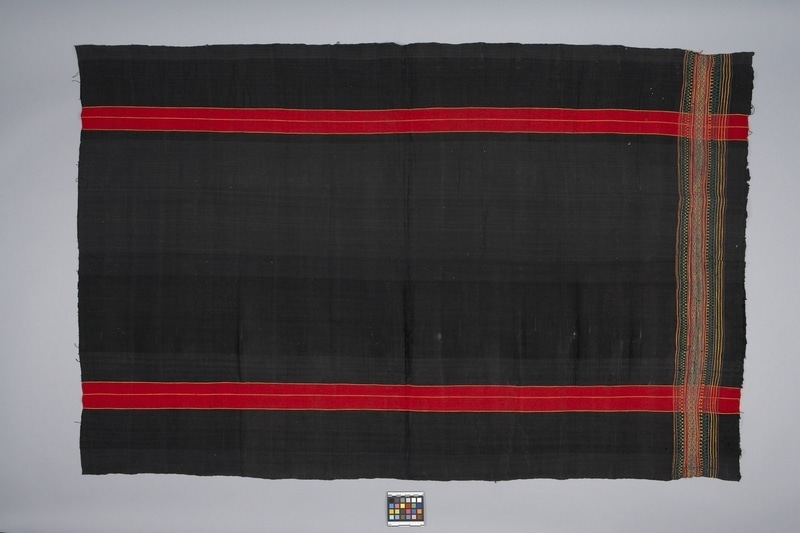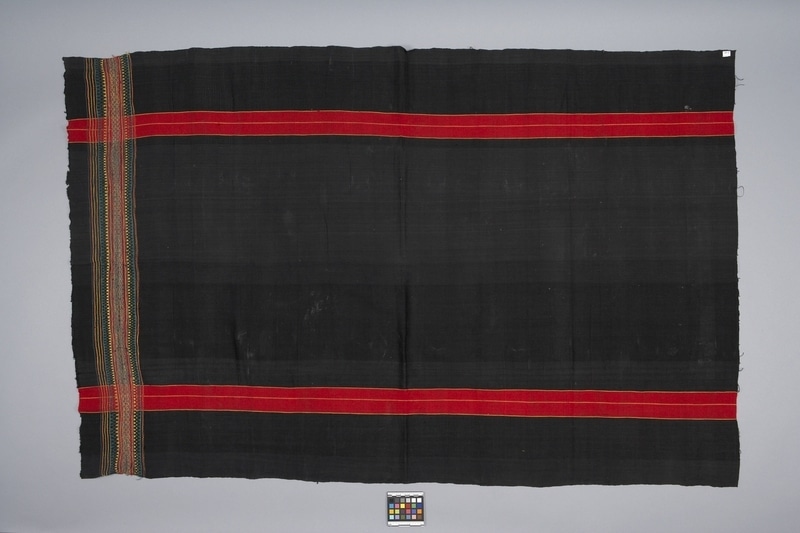Skirt Item Number: Ei33 from the MOA: University of British Columbia


Description
Rectangular black skirt made of hand-woven fabric of heavy textured cotton. Two plain red bands outlined in gold stripe run lengthwise, one at each side of the border. The widthwise border at one end is woven in a band of stripes using yellow, red and blue which outline a lozenge and checkered motifs.
History Of Use
In spite of the gradual expansion of mill-made textiles throughout the tribal areas of Tripura, every Chakma woman has her own portable loin (back strap) loom which she carries to the fields with her or uses in her household everyday. She who weaves best is held in high esteem by the community and the marriage of a girl is settled by judging her skill on the loom. Each girl weaves a risha to be worn on her wedding day on which is woven all the designs belonging to her mother's family which she, in turn, will pass on to her own daughters. Bright colours such as red are preferred and elaborating the design is considered a fascinating pursuit. In the attempt to create harmony of colour and design the weaver feels like a dancing girl when she works at her loom. Tribal motifs are much stylized and abstract each bearing its own traditional distinctiveness. Chakma women most commonly wear an unstitched wrapped body cloth (lungi) in traditional dress.
Cultural Context
everyday
Item History
- Made in Tripura, India
- Collected during 1976
- Owned by Stephen Inglis before December 2, 1977
- Received from Museum of Anthropology Donations Fund (Funding source) and Stephen Inglis (Seller) on December 2, 1977
What
- Name
- Skirt
- Identification Number
- Ei33
- Type of Item
- skirt
- Material
- cotton fibre and dye
- Manufacturing Technique
- woven
- Overall
- height 152.3 cm, width 100.2 cm
Who
- Culture
- Chakma
- Previous Owner
- Stephen Inglis
- Received from
- Museum of Anthropology Donations Fund (Funding source) and Stephen Inglis (Seller)
Where
- Holding Institution
- MOA: University of British Columbia
- Made in
- Tripura, India
When
- Collection Date
- during 1976
- Ownership Date
- before December 2, 1977
- Acquisition Date
- on December 2, 1977
Other
- Item Classes
- textiles
- Condition
- good
- Accession Number
- 0411/0147